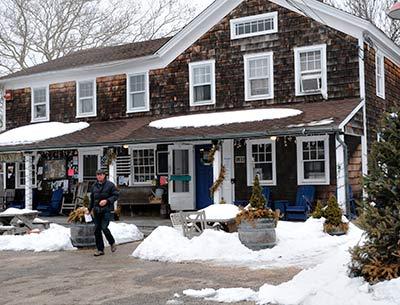Endorse Carry-In, Carry-Out
Endorse Carry-In, Carry-Out
While the East Hampton Town Trustees, who manage many of the town’s beaches and waterways on behalf of the public, have signaled grudging acceptance of the town board’s intention to ban alcohol at Indian Wells Beach in Amagansett during lifeguard-protected hours on weekends and holidays during the summer, they expressed greater enthusiasm at their meeting on March 25 for a pilot program aimed at reducing litter by removing trash receptacles and instituting a carry-in, carry-out policy there.
Town Councilman Peter Van Scoyoc and Dell Cullum, a wildlife removal specialist and photographer who is on the town’s litter committee, had attended the trustees’ prior meeting, on March 10, at which the issue was discussed. Mr. Cullum told the trustees that, with the tourist season approaching, it was “time to get attentive about this garbage situation we go through every summer.” Garbage cans on the beach, he said, “give lazy people more opportunity to be lazy” and only cause a greater litter problem in the long run, while Mr. Van Scoyoc had suggested a pilot program at the same meeting. Mr. Cullum also told the trustees that the second annual Shoreline Sweep, a beach-cleanup effort he is organizing, would take place on April 11, and asked for their participation.
At last week’s meeting, Deborah Klughers, a trustee, said carry-in, carry-out programs had been successful in national parks and other locations. She suggested the policy could be announced at the attended booth on Indian Wells Highway where nonresident vehicles, taxis, and buses are turned away and prohibited from entering the parking lot. Vendors, she said, would be responsible for garbage they generated.
Rona Klopman, a member of the town’s recycling and litter committee who attended the meeting, told the assembled that the committee had endorsed a carry-in, carry-out policy. “If you carry in stuff, it’s going to be carried out,” she said, predicting that the policy would reduce the costs of town garbage pickup. Signs explaining the policy, as well as public service announcements on LTV and WLNG, she said, could publicize the program.
Nat Miller, Ms. Klughers’s colleague, was concerned that, if implemented, it might seem as if the policy is working, but only because the town’s Parks Department staff was doing what beachgoers were unwilling to do. “I find it appalling that we have to buy a beach rake,” Mr. Miller said. “I want it known that it’s working, but did the beach rake pick up seven times more stuff?” The pilot program, Ms. Klughers conceded, “does have a personal-accountability component.” If the policy proved unsuccessful, she said, it could be discontinued immediately. “We don’t have to live with it for any specific amount of time, and it totally depends on the town board,” she said.
While he agreed that the concept is good, Bill Taylor, a trustee, was also concerned about the program’s efficacy. “You’d like to think about some kind of way to make it really work,” he said.
Before the meeting was over, the trustees agreed to send a letter of support for the pilot program to the town board, which is expected to discuss it at a work session on Tuesday.
With regard to the alcohol ban at the beach, the trustees maintained their insistence on a sunset clause, proposing its expiration on Sept. 30. “I can deal with this,” Sean McCaffrey, a trustee, said, “but just for one year.”
With the collective feeling that they are compromising more than the town board is by agreeing to another ban, the trustees again moved to ask the town to increase enforcement of existing laws and stiffen fines for littering. “Sometimes,” Mr. Miller said, “I think the town is afraid to spank the tourists.”

